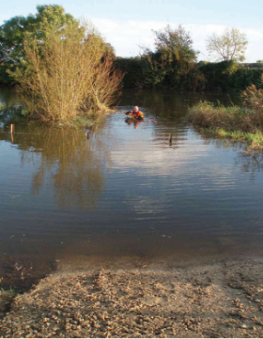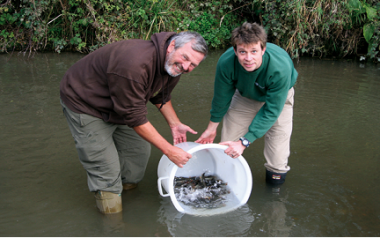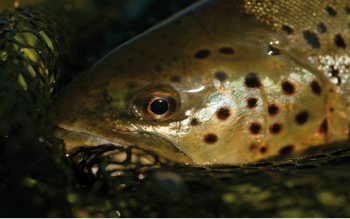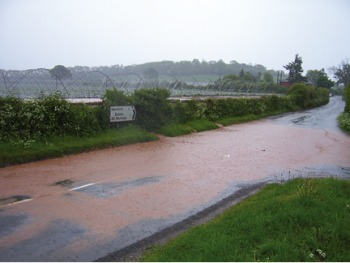Perk's
Vicars only have to work on Sundays. Airline pilots get free flights. Tree surgeons never go short of firewood. Every job has its perks.
Being a weekly fishing columnist means that occasionally people invite me to go fishing. Pat Carlin is such a person. When he wrote to me and invited me to join him on his charter boat the Channel Chieftain for a day’s wreck fishing from Weymouth, it felt like my perk-ship had at last come in. I took my mate Hugh Fearnley-Whittingstall along for the ride. For two reasons. One: because Hugh’s as mad for a day’s fishing as any man alive. And Two: because Hugh’s about the most enthusiastic and able cook of any fish that ever swum the sea.
Pollock was the quarry of choice. And the second world war wrecks 28 miles deep into the English Shipping Channel was the venue to be explored. Pat Carlin loves his wrecks. He collects their whereabouts with an obsessive passion. Find a deep water wreck and you’ll find fish. And Pat has been studying the location of wrecks off the south coast for twenty-odd years. He scours charts. Grills gill netters. Even picks the brains of elderly Naval officers to determine where the Navy lost or sank or discovered underwater debris over their long presence in and around Portland Harbour on the Dorset coast.
The Admiral Stamp is a wreck of a huge Naval tug which accidentally got shelled during a Second World War bombing exercise. It was towing a dilapidated ship being used for target practise when a stray shell holed the tug’s hull and sent it 200 feet beneath the grey foamy Channel. Where now it lies offering a safe haven for pouting, pollock coalfish and congers. Safe, until we arrive. What you need for wreck fishing is a stoutish boat rod, a multiplier packed with thin but strong braid, a ten ounce lead, and a trace of 20 pound line with a fat jelly worm threaded on a strong chemically-sharpened hook.
Jelly worms are an American invention, created for large mouth bass fishing in the lakes of the southern states. Pollock are Catholic in their tastes. They’re lazy, opportunistic fish with big eyes and big mouths. They love to hug around the lee of a wreck and gobble up anything that swims by. They live deep in a dark coloured sea where light penetrates no further than a few feet in the wintry, stirred-up water. There is nothing to see at 200 feet. Just black. So they feed on vibrations, or smell, or instinct.
The jelly worms, which can be up to eleven inches long, come in a rainbow selection of colours and shapes. Jelly fish, small shad imitations work well too. And today on the Admiral Stamp, the garlic-flavoured black jelly worm with a lurid pink tail seems to be the mutt’s nuts. Pollock love them. The trick is to drop the lead to the bottom and then to wind up 20 or 30 turns of the reel, an action which makes the worm look like it’s working it’s way up over the wreck. Then after the short retrieve, drop it back down until the lead bumps on the sea bed, or even the wreck, then wind back up again.
Hugh has mastered the knack in minutes and brought a bug-eyed green-flanked pollock on board half way through the first drift over the wreck. I take longer to get in the groove. Boat fishing is a beautifully democratic, evilly unpredictable way of angling. You can stand two feet away from a man using exactly the same tackle and he’ll outfish you five-to-one. Why? God knows. It’s best not to wonder. Just take the bad luck with the good, and be happy to see fish come aboard.
Pat warned us about coalfish. “A pollock will take hard and swim down with the bait taking ten or twelve feet of line” he explained. “A coalfish fights much harder. He’ll take twenty or thirty feet and keep going. Anglers often panic and start thumbing the spool to increase the drag. It’s a big mistake. The line breaks and they swear. ‘God what was that?’. It was a coalfish. I tell them. Was. We lose more than we catch”. Not Hugh. Hugh hooked a big coalfish and bullied it onto the deck pumping and winding. Winding and pumping, until the big dark beast was laying in the net. Singing to be supper.
Hugh is a man who when he sees fish, sees dinner. Too many sea anglers simply go fishing, drag home huge bags of fish to give to friends and neighbours and never get around to eating them. Too many sea anglers hate eating fish. Me, I’m a fish-eater first, angler second.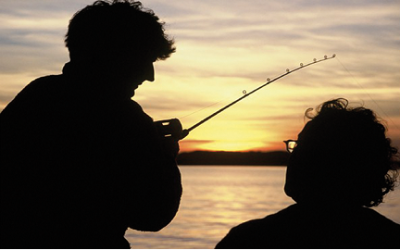
“I have a group of Chinese chefs from Bristol who come fishing with me” says Pat. “They love their fish. They appreciate every single one that comes on board. And they’ll eat anything. If I’ve got live sand eels on board for bass fishing I have to keep an eye on the chefs or they’ll eat them before we get to the fishing grounds”. Pat, a connoisseur of fine fish flesh himself, loves nothing better than to take fish aficionados out to sea. “The only downside to the Chinese chefs is they’re mad for gambling. They go bonkers when we go too far out to sea, out of mobile phone range. If they can’t contact their bookies.”
One summer he took an Hasidic jewish family to sea. “Complete with ringlets and huge flat hats. They were from London. Drove a big Volvo. I don’t think the kids had even seen a boat before. Let alone been on one. They went mad” he remembers. “It was only a mackerel trip, but the dad took it very seriously. Every fish they caught he had to kill. Then he bled them. Kosher approach. Didn’t want me to even touch them. Just he and his son were allowed to kill the fish. Every one was wrapped and taken home. They were delighted.” And so was Hugh, to see the big dark coalfish with salmon-silver sides laying in the fish box. When we got it home and I filleted all the flesh off the flanks. He decided he wanted to bake the head. So I trimmed it off leaving a shoulder of meat below the neck.
The huge eye-staring head went into a roasting tin covered with garlic, ginger and lashings of olive oil. Three quarters of an hour later it came out of a satanically hot oven and was served with creamy mashed potato and black pepper. We sucked gobbets of meat out of its cheeks. Dug at hidden crevasses in its cranium and mushed the flesh up with the mash.
If ever there was a day filled with chin dripping perks this was it. Some days, most days, I really, really love my job.
River Cottage run all day fishing trips out of Weymouth, ideal waters for bream, mackerel and pollack. The day includes onboard fish skills, hot smoking demonstrations, superb food prepared in the RC kitchens and all equipment needed. Tickets are £225 per person and trips run from April - September. They also run private trips, hosted by Nick and tailored to suit your party. Go to www.rivercottage.net or call 01297 630302 to find out more.




